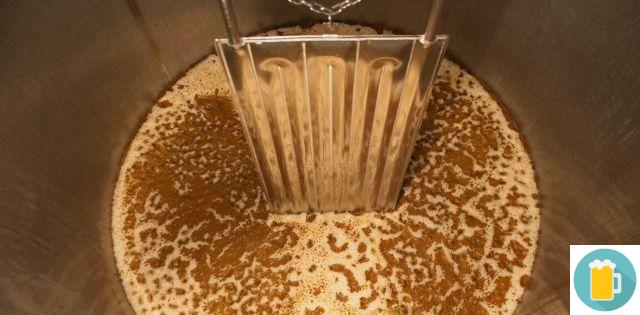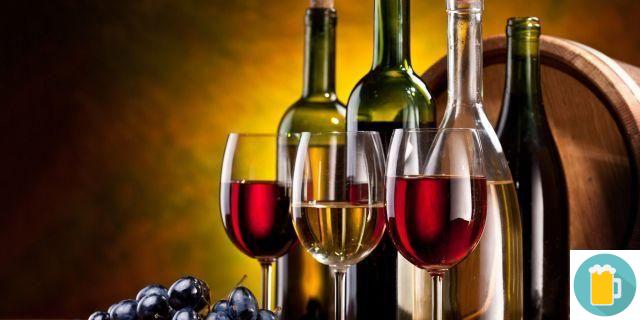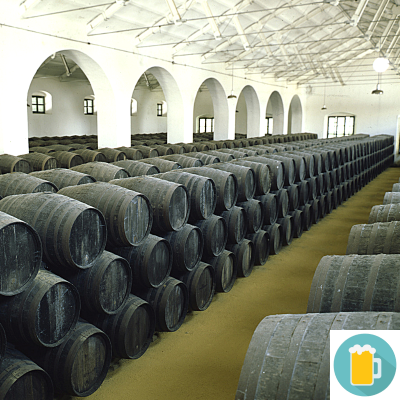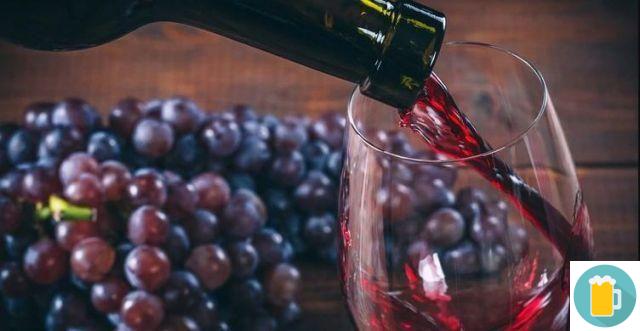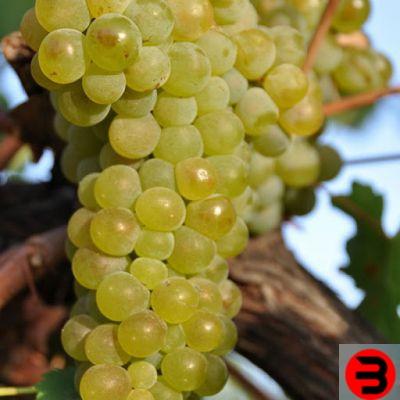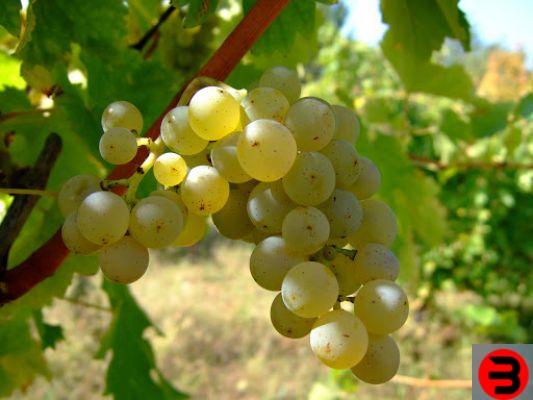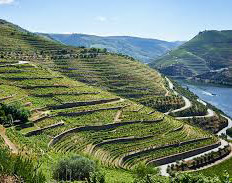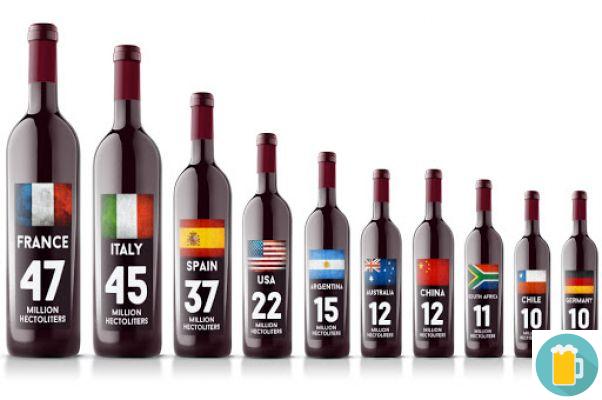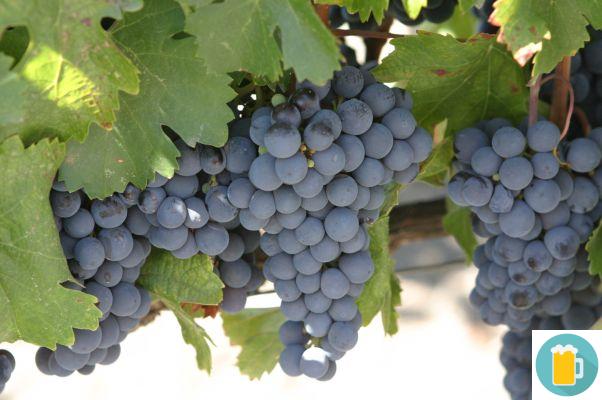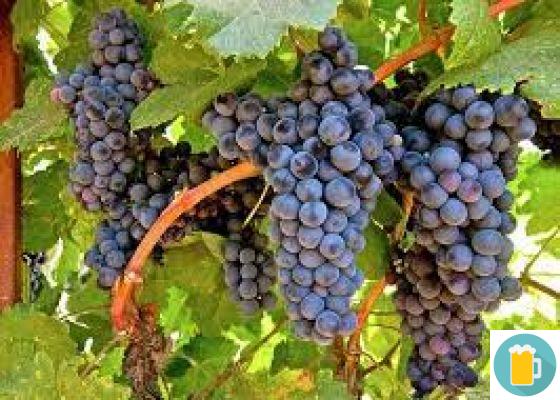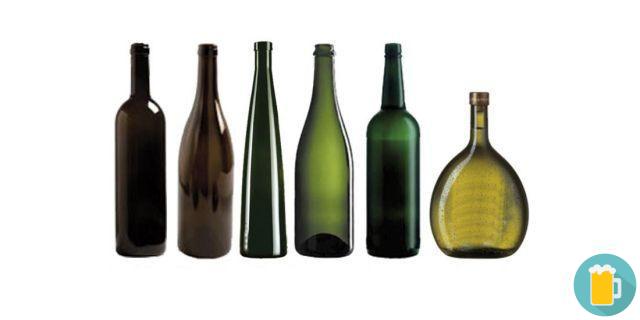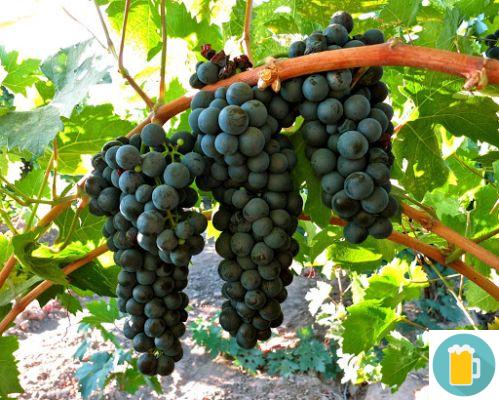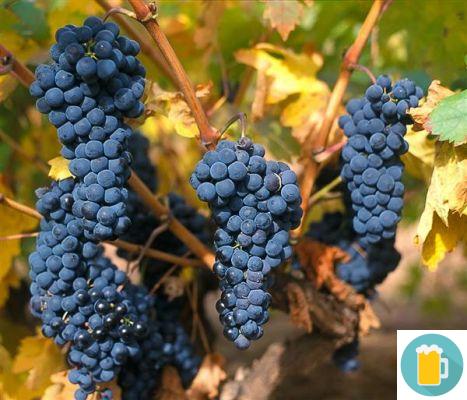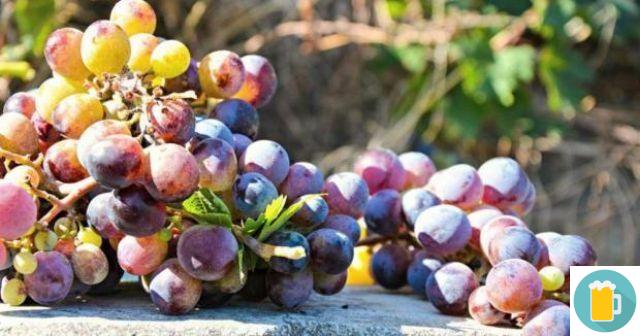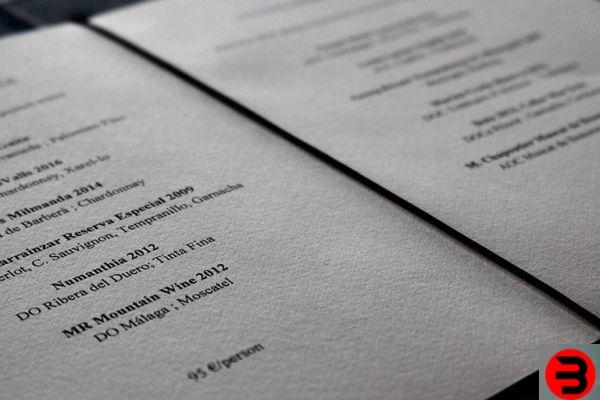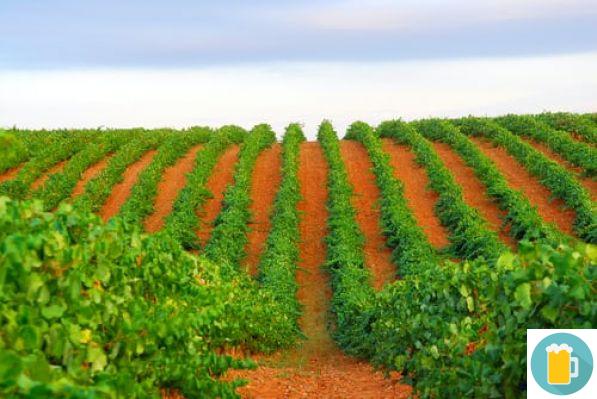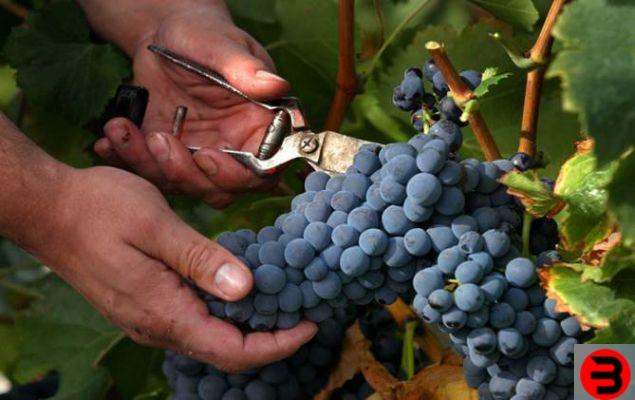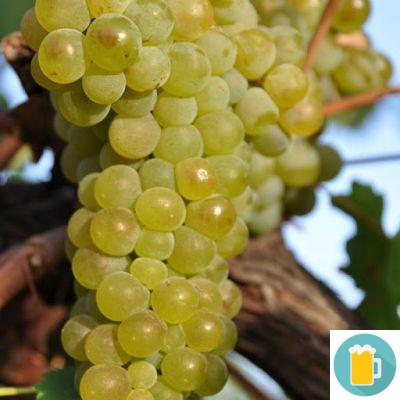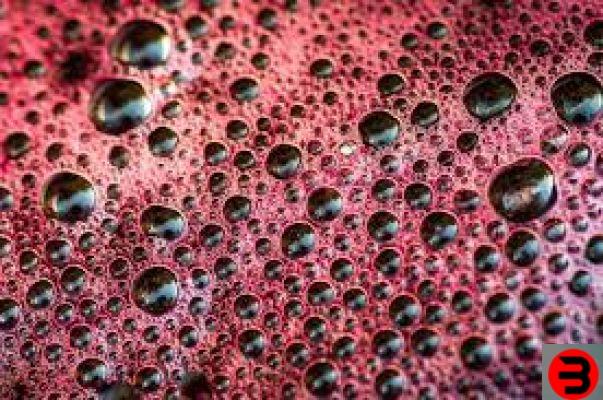Alcoholic fermentation
The role of alcoholic fermentation in winemaking
After pressing, once you get the must and made any corrections, the next phase is the fermentation alcoholic, which will lead to obtaining the proper wine. The role of alcoholic fermentation is primarily that of transform it XNUMX/XNUMX cup sugar in alcohol and carbon dioxide, but also to give life to a whole series of fermentation by-products that will make up what are defined as the aroma secondari (or, indeed, fermentation) that make up the olfactory base of each wine. Also vines aromatic they develop their primary aromas during fermentation, even if they were already present and recognizable in ripe grapes.
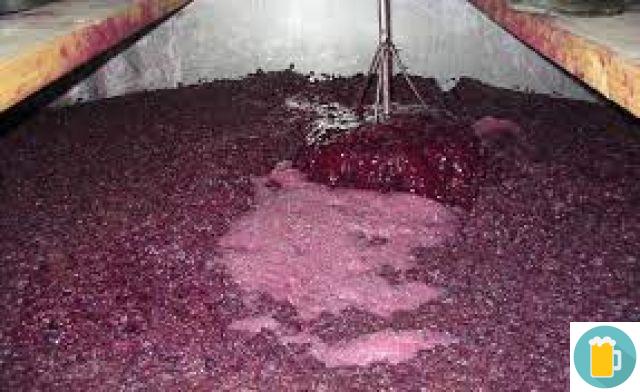
Alcoholic fermentation in detail
I yeast are found naturally in the air and are carried by the wind and by insects, depositing on the surface of the plants and on the grape skins, from which they will come into contact with the juice after the pressing, causing spontaneous fermentation. These yeasts are generally referred to as autochthonous, indigenous people o savages. In each vineyard there may be different species of indigenous yeasts, some useful, others less or even harmful as they can give life to unwanted substances such as acetic acid and other elements that could compromise the stability of the wine. These yeast populations are also constantly evolving, making it difficult if not impossible to obtain a reproducible result during fermentation.
The solution was found by creating selected yeast cultures with the aim of obtaining better control over fermentation and more quality wines end. Despite the fermentation carried out with the indigenous yeasts may be seen as more natural or traditional, the use of selected yeasts allows to obtain wines of higher quality, finesse and elegance and with better stability. The most used selected yeasts belong to the Saccharomyces Cerevisiae family for the fermentation of normal musts and the Saccharomyces Bayanus for the fermentation of musts with high sugar content or for the production of sparkling classic method.
Indigenous yeasts and selected yeasts
In oenology are used yeast of the species Saccharomyces cerevisiae, of the same family as those used for beer. Yeasts are therefore unicellular fungal microorganisms, spherical, oval or elliptical in shape, about 5-30 μm in length and 1-5 μm in width. The yeasts are already present on grape skins, less on immature grapes, but with the maturity and up to harvest, the sugars reach the surface of the berries providing nourishment to the yeasts, increasing the population. The so-called indigenous yeasts (occurring in nature) belong to families other than those selected artificially (Saccharomyces cerevisiae). On the immature clusters, genera such as Torulopsis, Cryptococcus, Rhodotorula and Candida predominate, as well as Aureobasidium, Sporobolomyces, Filobasidium, generally present in the vineyard (soil, leaves, bark). In the bunches maturi are found above all apiculate yeasts oxidative metabolism such as Hanseniaspora and Metschnikowia, which seem to dominate even on damaged fruits, while the main fermentation agent, Saccharomyces cerevisiae, is not present except in very small quantities on the bunches.
Respiration and growth of yeasts
In the initial phase of the transformation of sugars, yeasts play a aerobic breathing (using oxygen in the air), which transforms sugars into CO2 and H2O. This metabolic phase allows the yeasts to obtain the amount of energy necessary for their rapid growth. There fermentation true and proper occurs within the mass when yeasts, due to lack of oxygen, pass from an aerobic to anaerobic metabolism.
Glycolysis and fermentation
The set of transformation reactions of sugar (glucose and fructose) both anaerobically and aerobically, is defined glycolysis. Glycolysis takes place inside the yeast cells, leading to obtain theATP (adenosine triphosphate), molecules with high energy content used by cells and as by-products thepyruvic acid, in turn a starting molecule for subsequent and intermediate biosynthesis reactions including glycerol. In anaerobic conditions the yeasts transform pyruvic acid into carbon dioxide and ethyl alcohol which end the alcoholic fermentation.
The products of alcoholic fermentation
During the alcoholic fermentation the sugar contained in the wort are converted by yeast in ethyl alcohol e carbon dioxide. Yeasts are unicellular microorganisms that use the sugars present in the must to grow and multiply. In the initial phases of this process, which develops in over thirty successive reactions, the yeasts carry out an aerobiotic respiration, that is, they use the oxygen present in the must to transform the sugars into water and carbon dioxide. Soon the little oxygen present in the must runs out and it is at this point, in anaerobic conditions, that the actual fermentation begins. In this phase the yeasts cause the oxidation of sugars and their transformation. Depending on the yeast used about 50% of the sugar is transformed into alcohol, 45% in carbon dioxide, 3% in glycerol and 2% in other substances of different nature which, as already mentioned, play an essential role in determining the aromatic and gustatory qualities of wine. The most important by-products that deserve a mention are acetaldehyde, acetic acid (responsible foracidity "Volatile), ethyl acetate, glycerol and other types of polyvalent alcohols which determine among other things the softness of the taste of the wine.
La quality and quantity of fermentation products obviously depend on how the process is conducted. It is of fundamental importance that the must has not undergone oxidative phenomena before the start of fermentation, so it is good that this is started as soon as possible, after the normal stabilization operations. decanting and clarification of the must. As the must is highly sugary, it is in fact particularly sensitive to attacks by bacteria but also to microbial and oxidative alterations. The pre-fermentation phase must be as short as possible and the must can be further protected by adding sulfur dioxide, which allows the decanting and clarification operations to be carried out without risking the alteration of the must. Selected yeasts must be added to the must before fermentation begins.
Duration of alcoholic fermentation
La duration of fermentation, depending on the type of must and how it has been treated, it can vary between 5 and 15 days. It is important that fermentation does not take place too quickly, because the formation of carbon dioxide would be violent and would lead to the dispersion of aromatic substances. However, fermentation must not be too slow, as it would risk generating unwanted substances, including an excess of volatile acidity. Also there temperature it must be kept in the right range. If the temperature is too low (1), while the presence of alcohol and sugar alcohols lowers the density below this value. For density control yes USA a common hydrometer, also called a mostimeter. When the density of the must falls below the unit value, fermentation is practically completed and the tumultuous bubbling of the wine ceases. At this point, with a concentration of residual sugars of 1-2%, the time has come to carry out the "svinatura", That is to separate the wine from the residues of the yeasts and other solid substances that settle on the bottom at the end of fermentation, to avoid that their degradation risks damaging the stability and quality of wine.
The bleeding
The ideal time for racking is chosen according to the type of wine to be produced. THE young red wines they are left to macerate for four or five days with the skins, and are then drawn off before the end of fermentation; the quality red wines and those produced with uve surmature at the end of the alcoholic fermentation, while i robust and structured wines or those destined for long aging they are drawn off a few days later, allowing the Red wines to macerate further with the skins and ai White wines with the lees, thus giving a greater structure.
La racking must be carried out in contact with the air, favoring a strong oxygenation, which has two important effects: first of all it leads to the oxidation of reductive compounds with an unpleasant smell such as hydrogen sulphide (which smells of rotten eggs) and also causes the reactivation of yeasts remained for the so-called slow fermentation of residual sugars in the days following racking. The racking causes the removal and the decrease in the concentration of sulfur dioxide added as a precaution after crushing, so it will be advisable to partially reintegrate it before the subsequent racking, to avoid the risk of degradation and oxidation.




